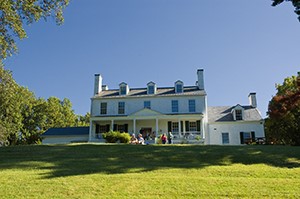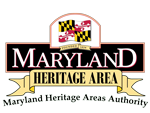
Description
Preserved in 1998 by the State of Maryland’s Program Open Space (POS), Chapman State Park stretches from the Potomac River to Mattawoman Creek, in western Charles County. The park is a reminder of the woodlands that once blanketed the Potomac tidewater region. The park includes the historic Mt. Aventine Mansion, built in 1840 to replace an earlier structure which burned, and then expanded in 1860. The Chapman family owned large parcels of land in Maryland and in northern Virginia.
The Chapman plantation relied on enslaved laborers to care for the family, tend to the fields, work as carpenters, metal workers, and to operate the fisheries and ferry on the property. Documents show that in 1790, the Chapmans had 33 people enslaved; by 1808 their numbers had increased to 49. During the Civil War, Federal troops watching movements on the Potomac River below used a cupola on the mansion as a signal station. After the Civil War many of the freed Black laborers then worked the plantation as tenant farmers and domestic servants.
Archaeological evidence indicates people began inhabiting the area which now includes Chapman State Park approximately 3,000 years ago. By about 1300 A.D., Algonquin-speaking peoples lived from the Chesapeake Bay to the foot of the Appalachian Mountains, encompassing modern-day Southern Maryland and Northern Virginia. Most lived in semi-permanent villages or towns featuring “long-houses” surrounded by wood palisades. These Indigenous People were deeply connected to the land that they revered. For sustenance they grew corn, beans, and squash near the villages, as well as fished, hunted game and gathered fruits, nuts and berries. During his exploration of the Potomac River in 1608, Captain John Smith identified the people living near present-day Chapman State Park as the “Pamacacack.” Later called the Pamunkey, the people were closely aligned with the Piscataway, who dominated most of Southern Maryland until the arrival of European settlers in the 1630s.
Additional Resources
https://friendsofchapmansp.org/history/
https://www.onlyinyourstate.com/nature/maryland/chapman-state-park-md
The House on the Hill, Southern Maryland News
